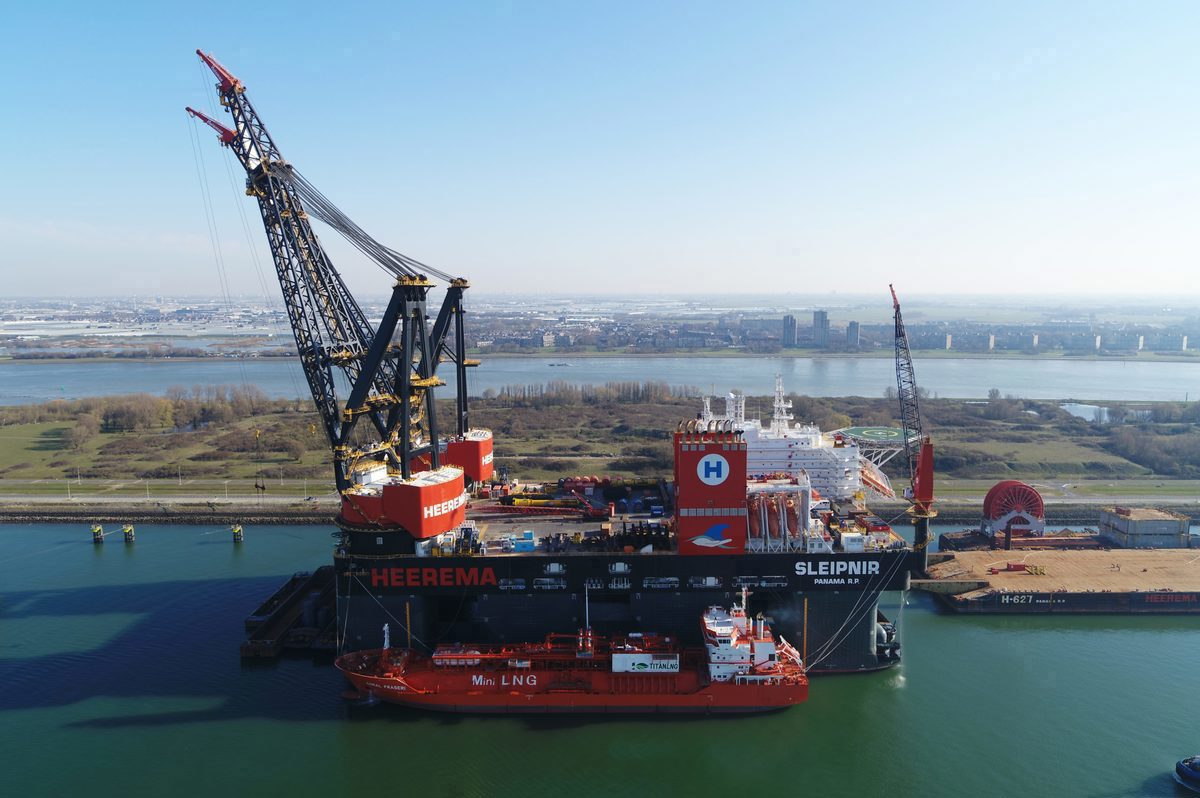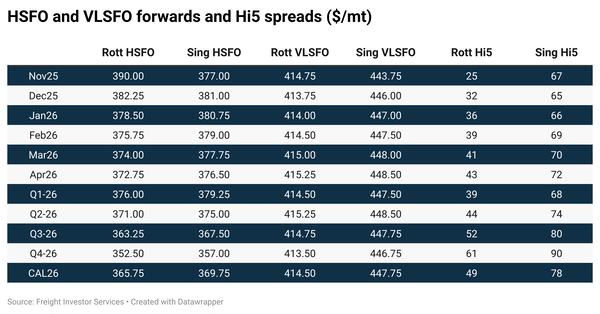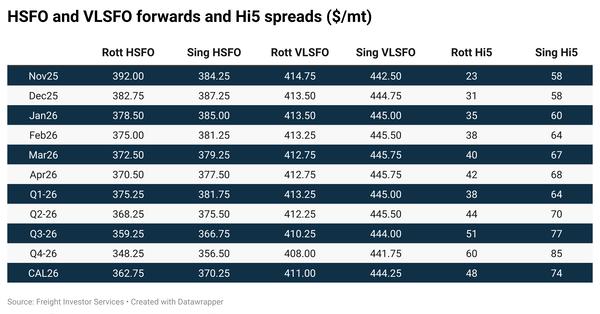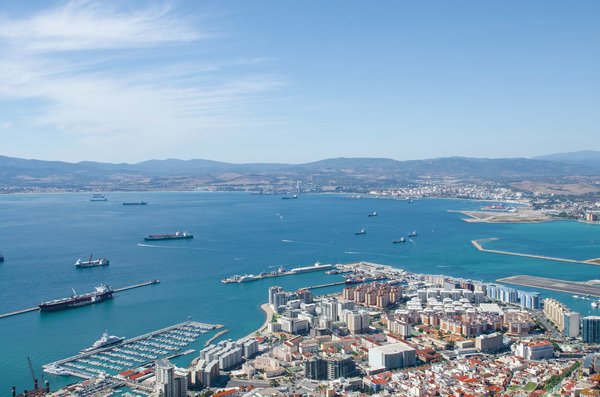Q&A: LNG market faces supply strain and fuel switching amid geopolitical risks – Poten & Partners
Supply risks from the expiration of the Ukraine-Russia gas transit deal could tighten the LNG market, especially as more dual-fuel vessels switch from LNG to oil.
 PHOTO: A bunker vessel delivering LNG to a semi-submersible crane vessel in Rotterdam. Titan
PHOTO: A bunker vessel delivering LNG to a semi-submersible crane vessel in Rotterdam. Titan
The LNG bunker market is under pressure as the expiration of the Ukraine-Russia gas transit deal could further strain European LNG supplies. With dual-fuel vessels showing a shift from LNG to oil amid price volatility, shipping companies are gradually adapting to changing market conditions.
In an interview with ENGINE, Jason Feer, Global Head of Business Intelligence at Poten & Partners, explains how these developments are shaping the market. Feer outlines the risks posed by geopolitical instability and the growing demand for alternative fuels, giving insights into the future of LNG as a marine fuel.
What are the primary factors driving the shift from LNG to oil for dual-fuel vessels? How significant is the impact of delivery premiums for smaller LNG shipments?
I think the key point to make is that the LNG bunkering market is very small and as a result, the infrastructure supporting it is not as efficient as you would find if it was a widely used fuel like diesel or other liquid fuels.
This means that LNG bunkers are generally quite expensive relative to other conventional marine fuels, especially given that oil prices have been falling recently. While LNG prices have come down from their highs of 2022-2023, at $11-12/MMBtu, they are still relatively high on a historic basis. Crude prices, meanwhile, have dropped to the lows of $70s/bbl [ICE Brent] in Europe and highs of $60/bbl in the US [WTI Crude].
LNG bunkers mostly serve ferries, cruise ships and service vessels, ships that are on regular schedules and that can use the same ports to bunker. The only major use of LNG as bunker fuel for blue water shipping is LNG carriers, which capture and burn gas from their cargoes that have vaporized (known as boil off) so it makes sense for them to use this as fuel.
With the expiration of the Ukraine-Russia gas transit deal and growing LNG demand in Europe, how do you anticipate market volatility will affect LNG supply and pricing in the region?
Price is largely driving the shift from LNG to other fuels. At present, there is plenty of LNG in the market and European storage (as well as storage in most other regions) is quite high, so prompt demand is weak. But there is anxiety about supplies coming from Russia, though they are much lower than they were before the war. And this uncertainty is helping to maintain prices. LNG is also a very cyclical market, and we are approaching winter when demand normally rises sharply due to heating demand in the northern hemisphere.
Are high gas storage levels in Europe influencing LNG bunker prices? What role does the European Commission’s storage target play in this context?
High inventories would affect prices for LNG and natural gas in Europe, but [LNG bunker delivered] prices would be higher than piped [gas] prices because of the need for additional infrastructure, the need for smaller amounts, etc.
What are the expectations for LNG prices and supply in the near to mid-term? Are there any anticipated changes in market conditions that could impact these trends?
More LNG supply is coming and that will start to hit the market later this year, but is expected to pick up speed in 2025 and beyond. Of course, we will see how demand develops but we expect that there will be adequate to abundant supply over the next five years or so. This should help keep prices moderate on average, though seasonal spikes and unexpected disruptions to supply could change that.
To what extent do dual-fuel vessel orders signal the demand for sustainable fuels?
The problem with sustainable fuels is that they continue to be much more expensive than conventional fuels. Biodiesel and bio-methane are several times more expensive than their conventional equivalents. When shippers are forced to use renewables, they will, but in general, fuel costs are a large part of shipping costs so most owners and shippers will opt for less expensive alternatives when they can.
By Debarati Bhattacharjee
Please get in touch with comments or additional info to news@engine.online

Contact our Experts
With 50+ traders in 12 offices around the world, our team is available 24/7 to support you in your energy procurement needs.




